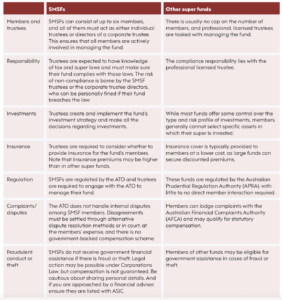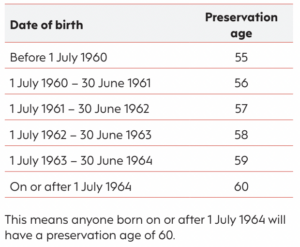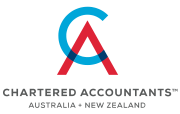Making contributions later in life
Superannuation laws have been simplified over recent years to allow older Australians more flexibility to top up their superannuation. Below is a summary of what you need to know when it comes to making superannuation contributions.
Adding to super
The two main types of contributions that can be made to superannuation are called concessional contributions and non-concessional contributions.
Concessional contributions are before-tax contributions and are generally taxed at 15% within your fund. This is the most common type of contribution individuals receive as it includes superannuation guarantee payments your employer makes into your fund on your behalf. Other types of concessional contributions include salary sacrifice contributions and tax-deductible personal contributions. The government sets limits on how much money you can add to your superannuation each year.
Currently, the annual concessional contribution cap is $30,000 in 2024/25.
Non-concessional contributions are voluntary contributions you can make from your after-tax dollars. For example, you may wish to make extra contributions using funds from your bank account or other savings. As such, non-concessional contributions are an after-tax contribution because you have already paid tax on these funds. Currently, the annual non-concessional contribution cap is $120,000 in 2024/25.
Super contribution options for people under 75
If you’re under 75, you can make and receive various types of contributions to your superannuation, such as:
■ Compulsory superannuation guarantee contributions
■ Salary sacrifice contributions
■ Personal non-concessional (after-tax) contributions
■ Contributions from your spouse
■ Downsizer contributions from selling your home
■ Personal tax-deductible contributions
Work test rule relaxed
After age 67, you’ll need to meet the “work test” or qualify for a “work-test exemption” to make personal tax-deductible contributions. To satisfy the work test, you must work at least 40 hours during a consecutive 30-day period each financial year.
Prior to 1 July 2022, the work test applied to most contributions made by individuals aged between 67 to 75, but now it only needs to be met for personal tax-deductible contributions. The good news is that you don’t need to meet the work test for other types of contributions, so being retired won’t stop you from contributing to superannuation.
So whether you are still working or retired, you can continue to make superannuation contributions to benefit you in retirement and beyond.
If you don’t meet the work test condition, you can use the “work test exemption” on a one-off basis if your total superannuation balance on the previous 30 June was less than $300,000 and you satisfied the work test requirements last financial year.
Meeting this requirement will allow you to also make personal tax-deductible contributions to superannuation.
Super contribution options for people over 75
Once you turn 75, most superannuation contributions are no longer allowed. The only exceptions are compulsory superannuation guarantee contributions from your employer (if you’re still working) and downsizer contributions from selling your home.
If you’re about to turn 75 or have just passed that milestone, you still have one final chance to make or receive other contributions. Superannuation funds can accept contributions for up to 28 days after the month you turn 75. For example, if you turn age 75 in October, the contribution must be received by your superannuation fund by 28 November.
Final word
Changes to the contribution rules now allow more flexibility for people in their 60s and 70s to add to their superannuation. So whether you are still working or retired, you can continue to make superannuation contributions to benefit you in retirement and beyond.
What is the right business structure?
If you carry on a business – small or large – the question of which business structure to use always arises – and not just from when you start that business, but also during its operation when it may be beneficial to change from one structure to another.
Essentially, there are four major ways in which you can carry on a business: as a sole trader, in partnership, or through a company or trust – or even a combination of these (eg, in a partnership of companies and/or trusts).
Moreover, each has their own particular advantages and disadvantages – particularly when it comes to taxation consequences (and the benefits thereof).
By way of a simple example, if you operate a business in partnership you have the legal problem of being “jointly and severally” liable for any debts of the partnership (ie, you can be personally liable for all the debts of the partnership even if they were “incurred” by the other partner).
On the other hand, there are not a lot of legal formalities to comply with (unlike a company) and, moreover, from a tax point of view you can generally split the income from the business with the other partner/s in the most tax advantaged manner.
Furthermore, and something that is often forgotten, any tax losses made by the partnership can be attributed to the partners – and can be used to reduce tax on their other income. This may be particularly useful in the early stage of a business when losses are more likely to be made.
This is unlike companies and trusts where the losses remain “locked” in the company or trust until such time that there is income against which they can be offset. And even then there are complex rules that prevent such losses being used in this way if, for example, there has not been underlying “continuity in ownership” of the company or trust.
On the other hand, family trusts at least do in effect allow flexible “splitting” of the income or profits made by the trust in a tax effective way. And companies and unit trusts also allow the same – but in a somewhat more rigid manner.
However, the key point we seek to make is that you can change the structure of your business at any time in its operation – and in regards tax, you can do so usually without any adverse tax consequences because of the various concessions and roll-overs that allow you to do so.
For example, if you have been running your business as a sole practitioner or in partnership you can roll-over your business (ie, the assets that comprise it) into a company or trust without there being any adverse tax consequences.
Of course, this is subject to meeting certain eligibility requirements – the main one of which is that you remain the beneficial owner of the business in that you remain the controller of the business in the same way you were before the “roll-over”.
And this is just at the simple end of this type of roll-over. In fact, the roll-over provisions now allow you to even roll-over a small business from whatever structure into a discretionary trust structure (with all its tax benefits). But again this is in effect subject to the same “continuity of beneficial ownership” existing both before and after the roll-over.
Finally, and crucially, even in the event you trigger a capital gain on restructuring a small business, the CGT small business concessions should apply to allow you to eliminate or greatly reduce the assessable gain – and to roll-over the gain into buying assets for a new business.
If you are running a small business, and think it is time to do things a bit differently (at least from a tax perspective!) come and see us to discuss all the options and all the advantages and disadvantages of a particular structure.
Likewise, if you are thinking of starting a business for the first time, come and speak to us to work out what type of structure would best suit you at the start of your entrepreneurial adventure.
Selling a property with mixed rental and residential use
Selling a property that may have been used for mixed rental and residence purposes has a lot of capital gain tax (CGT) issues – and some of these also involve exercising good judgment as to how to best use the relevant CGT concessions.
By way of example, if you retain your original home and rent it after you have purchased your new home, you will have to make a decision about whether you want to retain a full CGT exemption on the original home (or maximise it, at least) or whether you want the full exemption to apply to the new home. (But there are also ways that you can, in effect, have your cake and eat it too!)
On the other hand, where you rent a property first and then afterwards live in it, then various concessions that may help reduce your CGT liability may not be available.
Further, there are important CGT rules and concessions that apply to a home that has been used for such mixed use where the owner dies and then it is later sold by beneficiaries. These can be complex, but if applied with good planning can have (very) good outcomes.
And then, of course, there is the issue of how you actually calculate any partial capital gain (or loss) in respect of a property that has been used for both rental and as a residence in circumstances where it is not possible to get a full exemption on it.
And these calculation issues can involve determining whether you can use a market value cost at any time in the process and how you can account for any non-deductible mortgage interest (and other non-deductible costs).
There is also the issue of whether you need to write-off any amounts for which you have claimed a deduction (such as building write-off deductions). In this regard, there is also the issue of whether you have actually claimed write-off amounts and therefore whether you need to write the amounts back in in any way (and the result may surprise you).
And crucially, there is also the issue of whether any partial capital gain can qualify for the very generous 50% CGT discount. (And in this regard, interestingly the tax concession that costs the government the most in foregone revenue in most financial years is the CGT discount applying to a partial exemption on a home!)
Interestingly the tax concession that costs the government the most in foregone revenue in most financial years is the CGT discount applying to a partial exemption on a home!
Of course, there are a lot of planning issues surrounding a property that you purchase with mixed intentions of both wanting to live in it and rent it.
For example, if you live in it first on a genuine (bona-fide) basis then you can access a concession that allows you to retain its full CGT exemption for up to six years.
Furthermore, if you rent it for more than six years and have to calculate a partial CGT exemption you can usually get the benefit of a market value cost at the time you first rent it to calculate this partial gain.
As can be seen, there are an array of CGT issues surrounding the selling of a property used for mixed rental and residence use – including the need to determine how to best use (and choose) various concessions to minimise any potential CGT liability.
So, if you are in this position – or even thinking of buying a property that may be used for this mixed purpose – come and have a chat to us.
Comparing SMSFs with other super funds
While all superannuation funds have a shared goal to provide retirement benefits to their members, there are many differences between SMSFs and other superannuation funds. So if you’re thinking about setting up an SMSF, it’s worthwhile comparing SMSFs with other funds before making your decision. Here, we highlight the main differences between SMSFs and other funds.

The dangers of failing to declare income or lodge returns
There are many adverse consequences associated with failing to lodge income tax returns or omitting income from those returns if the ATO finds out.
The ATO has increasingly sophisticated technology to track such matters and catch people out – including “data matching” programs where it compulsorily obtains masses of information from certain authorities (eg, banks, insurance companies, real estate bond boards etc).
And on top of this, the ATO does not even have to actually look at the information too closely – as a computer program does this for the Commissioner.
So, it now seems that there is a bigger risk of being caught for failing to lodge returns or declare income (and for wrongly claimed deductions).
Moreover, if the ATO does catch you out for this and raises amended assessments or default assessments and you decide to challenge the assessments, then you may well face an uphill battle in doing so.
This is because in any matter before the tribunals or courts, the onus will be on you to not only prove that the assessments are wrong (ie, “excessive”), but also what the correct amount of taxable income should be.
And in many cases, this will be an almost insurmountable task – if only because you may no longer have the relevant records to prove your claim. (And for the record, there have been very few cases in recent, or less recent history, where a taxpayer has succeeded in this task.)
For example, in a recent case where the tribunal found that the ATO had been “careless” in the way it arrived at the amount of the alleged omitted income (even to the extent that it considered sending the assessments back to the ATO to redo), the tribunal still said it was “duty bound” to find that the taxpayer had failed in its onus of proving the assessment was excessive.
Furthermore, the Commissioner has the power to impose harsh penalties for failing to lodge returns or declare income – and again, the onus would be on you, the taxpayer, to show that the penalties are excessive and should be reduced or remitted.
Likewise, the ATO has the power to issue amended or default assessments many years after the income year in which they were due or income was omitted if it believes there has been “fraud or evasion” on your part – and, once again, the onus would be on you to prove otherwise!
So, the moral of this story is make an appointment with us to make sure you do not omit assessable income or fail to lodge a return – and, moreover, seek our advice to help tidy up any instances where you may have done so (unwittingly or otherwise).
Click to view the Glance Consultants October 2024 newsletter via PDF



















